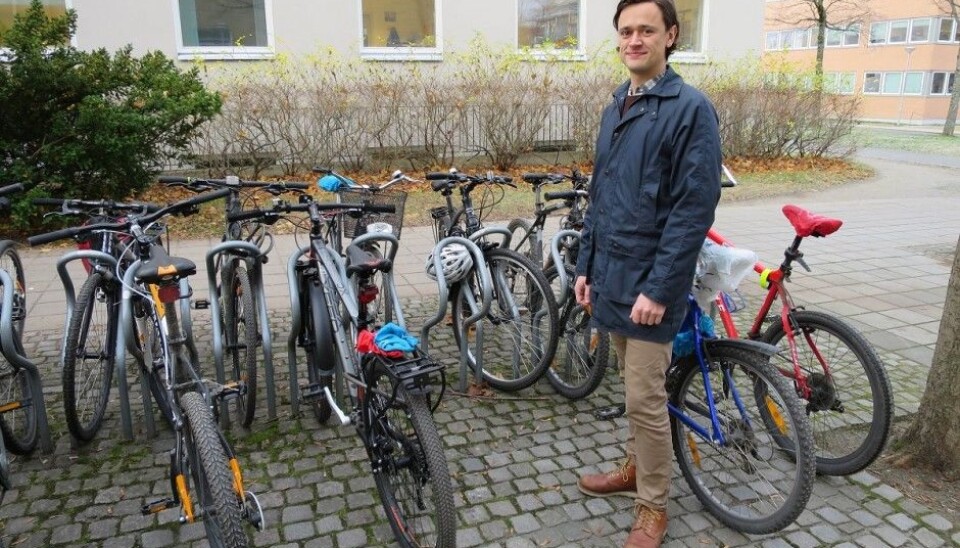An article from Norwegian SciTech News at NTNU

Seven tips to cut your CO2 emissions
Research can help you decide what measures will help cut your CO2 emissions the most. Reducing your shower time is one of them.
Denne artikkelen er over ti år gammel og kan inneholde utdatert informasjon.
It’s no wonder we may feel powerless as the UN climate summit—or COP21—struggles on in Paris. What can we as individuals really do for the environment, and what should we do about all the expert, but sometimes conflicting, advice that’s out there?
Researcher Kjartan Steen-Olsen of NTNU’s Industrial Ecology Programme is working on a project that relates to Norwegian households’ CO2 emissions.
He recommends seven measures to make our daily life climate friendlier:
1. Make one day meat free
Set aside one day a week where you don’t consume meat or meat products, with the exception of fish.

Fish is excluded since one fully vegetarian day a week may seem like a big step for many people. Fish-related emissions are relatively small compared with those for red meat, and health authorities also recommend that people eat more fish. Fruits, vegetables and bread/grains replace meat intake, so the calorie intake remains the same, and their additional carbon footprint is deducted in the calculations.
2. Reduce your indoor temperature
Reduce your indoor temperature by 1 ° C.
A typical Norwegian private household, defined as a three-room apartment of 71 m2, in which electricity covers 80 percent of the heating requirements, was used as the baseline for measurement.
On average, we assume that the energy saving potential is 8 kWh/year/m2 per degree that the temperature is lowered. Other assumptions are that the home is only heated in winter and that often several people live in one household. The average household consists of about 2.1 persons, so the energy savings are divided by 2.1 to get the average energy savings per person.
3. Cut one airline round-trip a year
This measure is defined as cutting one overseas holiday trip a year.
A trip is defined as two flights: one from your departure airport to your destination abroad and one from your destination airport back to your departure city. Emissions from any additional flights that are not from or to a Norwegian airport are not included because of missing and uncertain data.
On average, a trip like this, i.e. two flights, results in 268 kg CO2 equivalents per passenger. In 2014, 1,440,000 Norwegians took two or more such trips, meaning that there is a lot of room to cut emissions in this area.
4. Make one day a week a car-free day
This is defined as leaving your car at home one day a week over a period of a year.
Whether or not you do this on a weekday or weekend day isn’t specified, but the savings is calculated as an average. In practice, this means reducing your annual car use by one seventh. “Car use” in this context means both as a driver and passenger. The emissions calculations assume that several people ride in the car (with an average of 1.7 people), and the emissions are calculated on a per person basis.
5. Reduce food waste
This applies to the disposal of food that otherwise could have been eaten, and that comes directly from households.
Again, the average annual food consumption and food waste are based on Norwegian households, and divided by 2.12 people in an average household to obtain per-person figures.
6. Eliminate standby energy use
Many of our electrical and electronic appliances use power as long as they’re plugged in, even if they aren’t actually in direct use.
These include TV sets that are only switched off by remote control and not on the appliance itself.
Here there is some uncertainty in the figures, and it’s estimated that 10 percent of electricity consumption in a typical household is spent on this kind of standby consumption.
7. Shower efficiently
Hot water accounts for 15-20 percent of our electricity consumption, and a lot of that hot water goes to showering. Our example assumes the following:
- The household has installed a water-saving shower head that uses of 10 litres of water per minute. If you have not yet installed a water-saving showerhead, this should be your first step. Otherwise, you may end up using twice as much water as necessary!
- We assume that a person showers an average of once a day. Many people who participate in sports or exercise may shower more often than this, and others may shower less.
- Assuming a typical shower lasts ten minutes, and that this can be shortened to five minutes (i.e. time with running water), that would save 50 litres of water per person per day. Simply being more efficient in the shower can shorten the time. Wait to philosophize until afterwards, maybe turn off the water while lathering up, and so on.
-
In addition, it’s conceivable that we could do the following to reduce hot water consumption (but these measures are not included in the calculations here):
a. Shower only every other day, and take a sponge bath the other days.
b. Lower the shower head pressure instead of turning it on full blast. This can easily reduce water usage to 5 litres per minute.
c. Reduce the water temperature slightly.
How much can you save?
So how much can one person save, per year, by implementing these measures in their daily lives?
Steen-Olsen has estimated that with the definitions and assumptions made above, a person can reduce their carbon footprint by 780 kg CO2 equivalents!
By comparison, the total annual carbon footprint for Norwegian household consumption comes to 10.5 tonnes of CO2 equivalents per person. [1]
“Where you can cut the most? That would be on long flights, where enormous emissions occur in a very short time. If you take a weekend trip to New York, or go on a Thailand tour during the year, those trips will overshadow most of your emissions for the rest of the year,” says Steen-Olsen.
-------------------------------------
Read the Norwegian version of this article at forskning.no



































